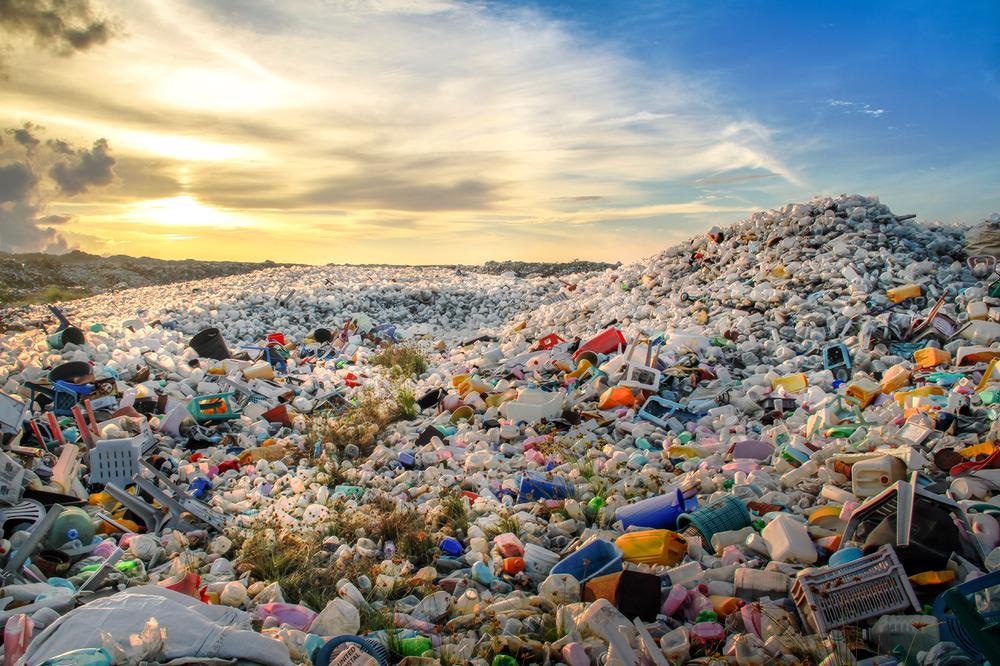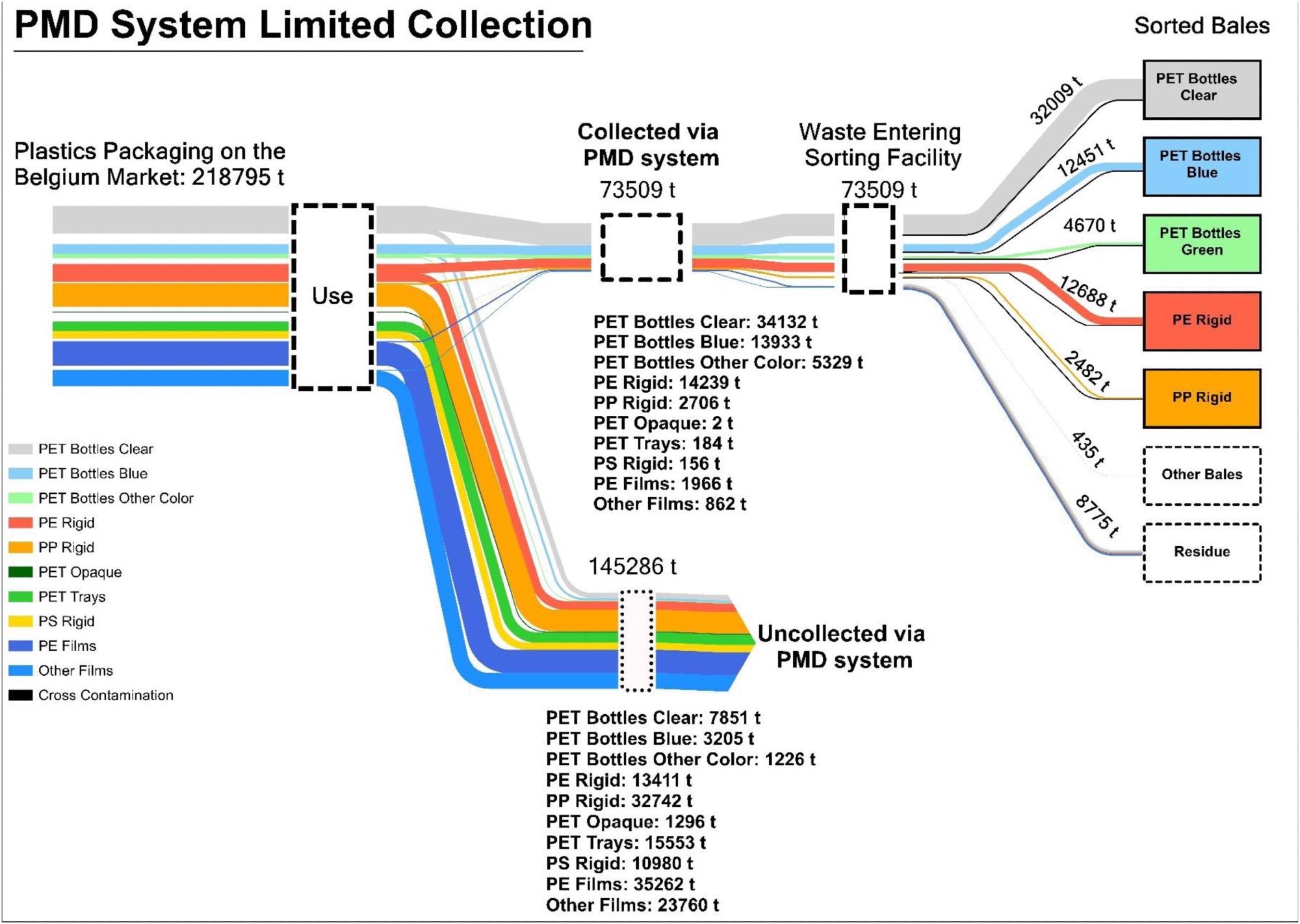.jpg) By Susha Cheriyedath, M.Sc.Reviewed by Skyla BailyNov 19 2021
By Susha Cheriyedath, M.Sc.Reviewed by Skyla BailyNov 19 2021A group of researchers from Belgium and the Netherlands have analyzed the quantity and quality of plastic packaging, the efficiency of their collection system, and the sorting of those plastic waste factions in the European Union. The survey has been published in the journal Resources, Conservation & Recycling.

Study: Expanding the collection portfolio of plastic packaging: Impact on quantity and quality of sorted plastic waste fractions. Image Credit: MOHAMED ABDULRAHEEM/Shutterstock.com
Efficient, effective, and sustainable environment-friendly end-of-life management of municipal solid waste is a huge global challenge. Procurement and recycling mechanisms for post-consumer plastic packaging waste are still least developed compared to some other packaging type wastes such as paper, metal, and glass.
Over the decades, various measures have been taken to improve the recycling rates of plastics and to accomplish a transition towards a more circular economy.

The methodology applied in this study to obtain the expected quantity and composition of generated plastic waste fractions or so-called ‘bales’ via the limited PMD system and the expanded P+MD system. Image Credit: M. Roosen et al., Resources, Conservation & Recycling
What is the Current Progress in the EU?
The European Union (EU) has been introducing more and more stringent legislation to improve plastic waste management and to encourage environment-friendly end-of-life use options such as re-use and recycling. EU’s targets include an increase in recycling rates for packaging materials; in the case of plastic packaging, the target to be met by 2025 is 50% while the 2030 target is 55%.
In the Netherlands, there is an existing collection system for various plastic packages (i.e., polypropylene (PP) and polyethylene (PE) bottles, trays, and plastic films), together with a deposit-refund system for large poly (ethylene terephthalate) (PET) bottles for soda drinks and water.
Recently in July 2021, this deposit-refund system was extended by the inclusion of small PET bottles. Before that, in 2015, the collection mechanism of the separate collection system was extended with metal packaging and beverage cartons.
Similarly, Germany also operates a collection system for mixed residual waste and a separate collection system that is called “Dual System”, where packaging and non-packaging materials such as plastic, paper, composites, and metals are disposed of for commingled collection.
In Belgium, metal packaging, beverage cartons, and certain mixed plastics have been collected via the so-called PMD bags. Between 2018 and 2020, the Belgian producer responsibility organization extended the collection system for plastics with the so-called P+MD bag.

MFA of plastic packaging as collected by the limited collection system (i.e., PMD system) from the moment that the packaging came on the market in 2015 until the end of the sorting process at MRFs, resulting in 5 sorted plastic waste fractions, 3 non-plastic waste fractions (i.e., ferro, non-ferro, and beverage cartons) which are here merged as ‘other bales’, and a residue stream. Cross-contamination by non-target packaging items in a certain sorted bale is visualized by black flow lines. Image Credit: M. Roosen et al., Resources, Conservation & Recycling
What did the Survey Find?
The team found that the extension of the mentioned collection systems for plastic packaging resulted in larger amounts of collected plastic wastes.
Also, the simulated net recovery rates, comprising both the collection efficiency and the sorting efficiency, are significantly influenced by some sorted fractions. The net recovery rate of the polypropylene PP rigid is expected to increase from an average of 6.9% to 41.8%.
In the case of PE rigid and poly (ethylene terephthalate) (PET) bottles, the influence on the recovery rate is less significant. The net recovery rate for PET bottles decreased by 5%, but the average net recovery rate of all plastic packaging impressively increased from 29.2% to 49.7%.
The team found that, for the PET bottle fraction and the PE rigids, the product grades are in the same order of magnitude when separated via the limited PMD system and via the expanded P+MD system. The product grade of the PET bottle clear fraction increased from 99.0% to 99.4%.
However, the PE rigids indicated a small decrease of the product grade i.e. from 99.0% to 96.3%. Moreover, the average product grade of the newly sorted fractions was only 89.6%. This indicated that these sorted fractions have a lower product grade than the sorted fractions that were included in the previous PMD system.
To indicate product purity, the team defined new indicators such as the polymer grade and the Simpson’s Diversity Index (SDI). The polymer grade of a sorted fraction was found to be lesser than the product grade owing to the presence of other unwanted substances such as other polymers, paper, moisture, and dirt. However, in terms of polymer purity, no significant decrease is expected by the expansion of the collection portfolio.

MFA of plastic packaging as collected by the expanded collection system (i.e., P+MD system) from the moment that the packaging came on the market in 2015 until the end of the sorting process at MRFs, resulting in 11 sorted plastic waste fractions, 3 non-plastic waste fractions (i.e., ferro, non-ferro, and beverage cartons) which are here merged as ‘other bales’, and a residue stream. Cross-contamination by non-target packaging items in a certain sorted bale is visualized by black flow lines. Image Credit: M. Roosen et al., Resources, Conservation & Recycling
The researchers used the SDI index to estimate the diversity of a sorted fraction. It indicates how many different types of unwanted substances, such as paper, polymer, and dirt are present in a sorted fraction. They observed the MPO fraction had a simulated SDI of 71.7% and the other film fraction had a simulated SDI of 82.2%.
The reasons behind this high difference in values are the MPO fraction has many different types of substances due to errors during the sorting process, whereas the other film fraction has a broad range of films with a diverse composition in terms of polymers.
Reference
M. Roosen, N. Mys, K. Kleinhans, I. Lase, S. Huysveld, M. Brouwer, E. Velzen, K. Van Geem, J. Dewulf, K. Ragaert, A. Dumoulin, S. Meester, Expanding the collection portfolio of plastic packaging: Impact on quantity and quality of sorted plastic waste fractions, https://www.sciencedirect.com/science/article/pii/S0921344921006339?via%3Dihub
Disclaimer: The views expressed here are those of the author expressed in their private capacity and do not necessarily represent the views of AZoM.com Limited T/A AZoNetwork the owner and operator of this website. This disclaimer forms part of the Terms and conditions of use of this website.